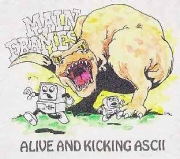I was wondering if anyone has a system, or is considering some kind of catalog or inventory for their hardware (or not so vintage, or other hobbies, or ...).
I have been looking to have spare parts or a second machine for most of my collection. Many of the spares are getting packed up and stored in a storage unit, as are systems that aren't being used often. For insurance purposes having an inventory would be good, but also just logistically. If I know what Origin 350/Tezro parts are in boxes in storage I don't have to go to the unit, dig out the box, etc.
I have had my eyes out for the follett library software that ran in DOS on the library computers in my high school, but I haven't found it. I'm beginning to consider building something - or just use one of the many home inventory programs? I don't know yet.
Anyone doing anything awesome?
I have been looking to have spare parts or a second machine for most of my collection. Many of the spares are getting packed up and stored in a storage unit, as are systems that aren't being used often. For insurance purposes having an inventory would be good, but also just logistically. If I know what Origin 350/Tezro parts are in boxes in storage I don't have to go to the unit, dig out the box, etc.
I have had my eyes out for the follett library software that ran in DOS on the library computers in my high school, but I haven't found it. I'm beginning to consider building something - or just use one of the many home inventory programs? I don't know yet.
Anyone doing anything awesome?















































 .
.






 .
.
 ) and so am I quite happy with its existence as I could not work the way I do without it. I like to think
) and so am I quite happy with its existence as I could not work the way I do without it. I like to think
 ), which will end up being facilitated puerly by 'the cloud' only. My hypothesis.
), which will end up being facilitated puerly by 'the cloud' only. My hypothesis.